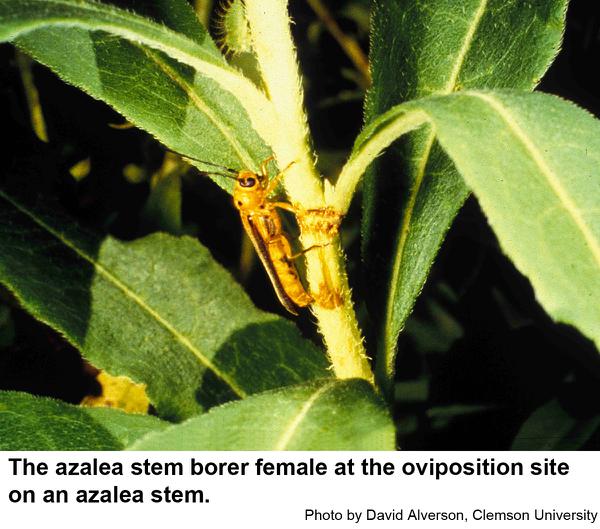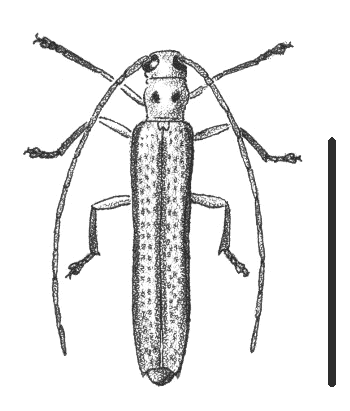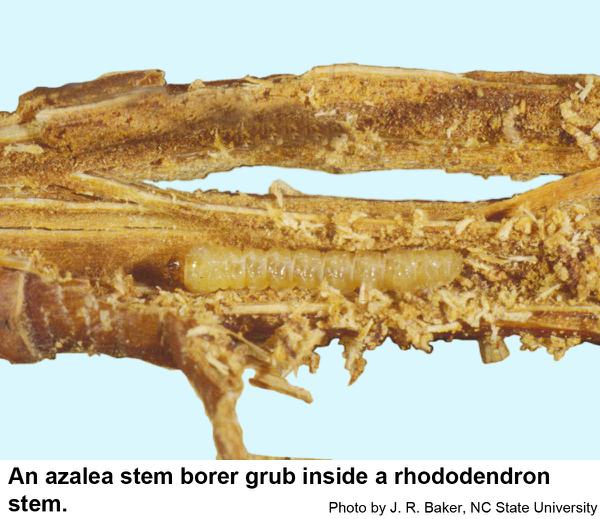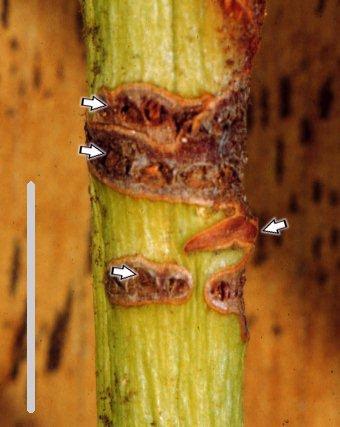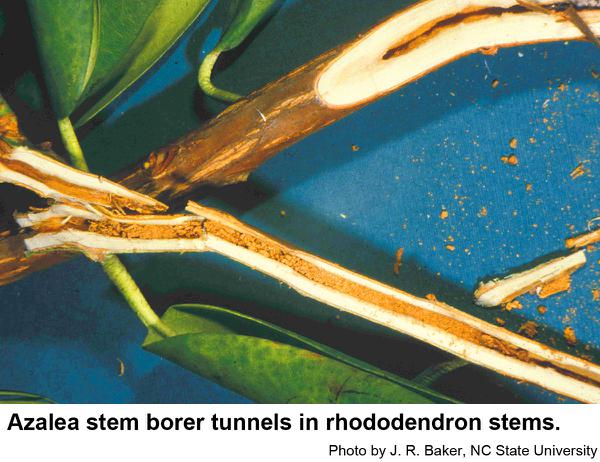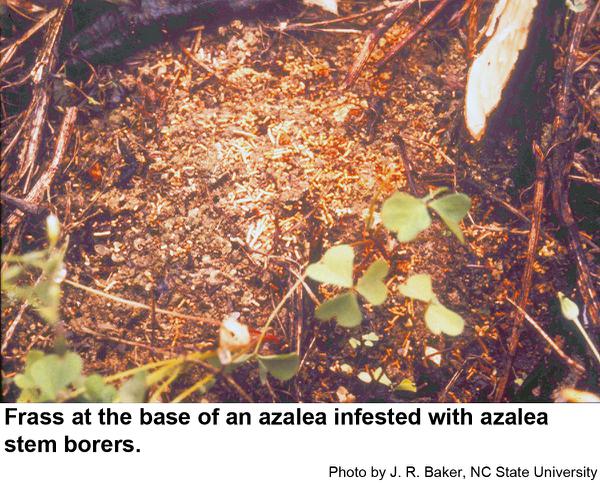General Information
Azalea stem borers (Oberea myops, aka rhododendron stem borer and blueberry stem borer) are slender long-horned beetles about 1⁄2 to 5⁄8 inch long with yellowish brown heads and thoraxes. The wing covers are yellowish gray with dark outer margins, and there are two black spots on the thorax. The egg has been described as "yellow." The eggs occur under the bark.
The azalea stem borer is a slender, yellow, legless grub found inside the stem. No description is available for the pupa.
Biology
The azalea stem borer is found throughout the eastern United States wherever azaleas and related plants grow. Azalea stem borers infest azalea, rhododendron, blueberry and mountain laurel. Infested twigs wilt and die as the larvae bore downward inside. At this stage, symptoms may resemble those from aerial phytophthora blight. Later in the season, infested stems often break off at the base leaving the plant lopsided and unattractive. Small plants may break off completely.
Adult azalea stem borers emerge from mid-May through June. Eggs are inserted under the bark between two rows of holes chewed through the bark about half inch apart (Figure 4 and Figure 5).
The larva hatches and bores down the twig into the stem and eventually all the way to the crown of the plant. The stem is greatly weakened at the base. The larvae then bore down into the roots where thy spend the winter. Coarse sawdustlike frass is expelled through holes in the bark of the stem and at the base of the plant (Figure 7). Infested twigs wilt as the larva bores downward inside. The larvae pupate the following spring or two or three years later.
Control
Cutting off and burning infested stems as soon as they are noticed in the growing season is recommended for control. If shrubs have been reinfested year after year, it may be helpful to protect the plants with a pyrethroid insecticide such as permethrin or cyfluthrin. When used as directed, pyrethroids are very toxic to insects but are not particularly hazardous to humans and pets (other than fish—avoid using pyrethroids around pools, ponds, and streams). They should give adequate control if applied after the new growth has emerged and hardened off sometime from mid-May to early June. Consult the North Carolina Agricultural Chemicals Manual for specific recommendations. Look in the Trees and Woody Ornamentals section, under "Any Plant: Borers." Be sure to read and follow all label instructions.
Other Resources
- Arthropod Pests of Azalea
- Azalea Pest Management Calendar. Frank, S. and J. Baker. 2019 (revised). Entomology Insect Notes, NC State Extension Publications.
- Natural History and Recommendations for Control of the Rhododendron Stem Borer, Oberea myops. Culin, J. D., C. S. Gorsuch and R. M Pizzuto. 1993. J. Amer. Rhododendron Soc. 47(4): 1 page.
- Insect and Related Pests of Shrubs
- NC State Extension Horticultural Science Publications
- NC State Extension Plant Pathology Publications
- North Carolina Agricultural Chemicals Manual
For assistance with a specific problem, contact your local Cooperative Extension center.
Publication date: Jan. 1, 1994
Revised: Nov. 12, 2020
N.C. Cooperative Extension prohibits discrimination and harassment regardless of age, color, disability, family and marital status, gender identity, national origin, political beliefs, race, religion, sex (including pregnancy), sexual orientation and veteran status.

